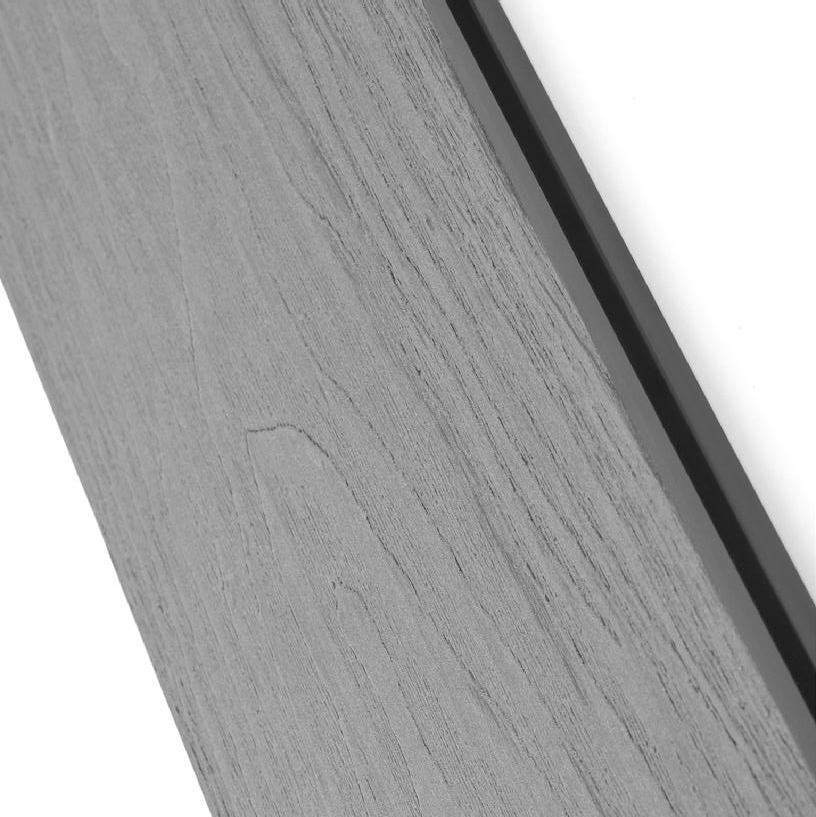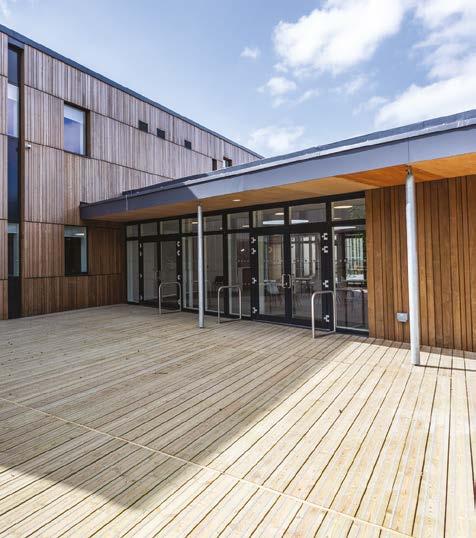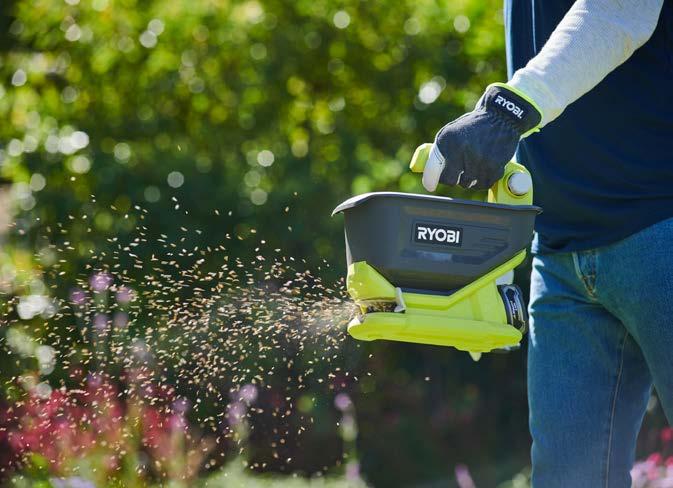
9 minute read
Innovative solutions for
INNOVATIVE SOLUTIONS FOR MAXIMIZING AND PRESERVING AN OUTDOOR LIVING SPACE
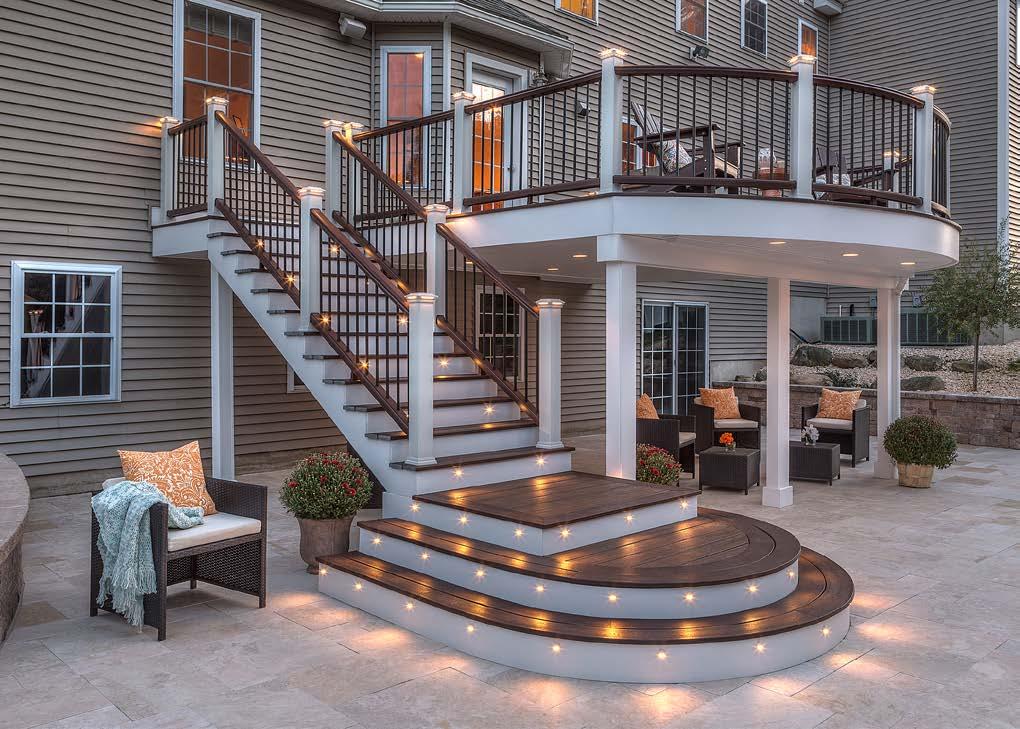
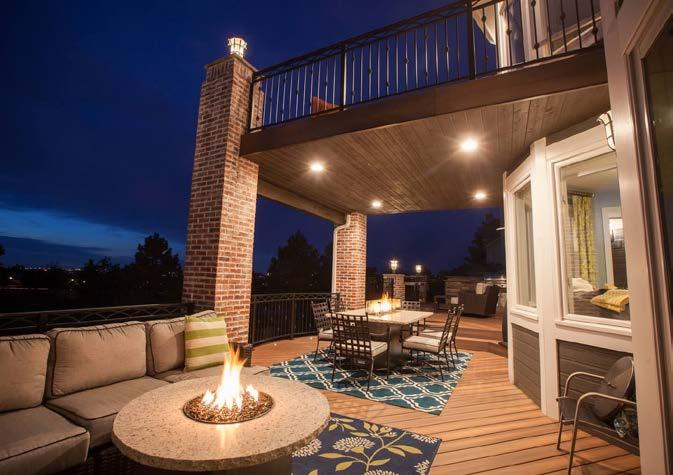
TWO EASY UPGRADES THAT ADD FUNCTION, PROTECTION AND CLIENT SATISFACTION
By: Simon Thomas, TrexPro and Owner of Simon Thomas Deck and Design
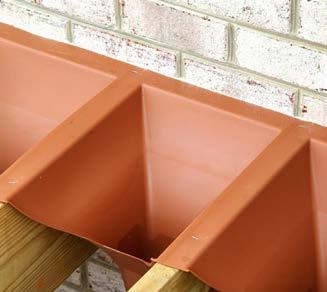

It’s no surprise that we Brits love our gardens! And with many people spending more time at home these days, outdoor spaces have become more important than ever. From small extensions to major renovations, consumer interest in deck and patio remodeling projects is at an all-time high, and homeowners are more willing to invest in elements that expand and extend the use of their garden spaces.
One of the easiest – and often overlooked – ways to add value and function to any outdoor area is to create usable, dry storage space beneath a deck. As long as the space is accessible and properly protected from the elements, it can be used to store virtually anything. And who couldn’t use a little more storage space?
Go Below: Utilizing Under-Deck Areas
For years, homeowners – not to mention architects, builders and contractors – have neglected to take advantage of under-deck spaces. And, for those that have used the space under a deck for storage, odds are it hasn’t been pretty – especially in light of our often wet and rainy U.K. climate. I’ve certainly seen my share of outdoor storage spaces filled with deteriorating items covered in mud, mould and mildew due to being exposed to too much moisture.
Still, creating useable space beneath a deck is one of my favourite addons to any garden project. The secret to success and customer satisfaction is adding a deck drainage system. Using a network of troughs and downspouts, these systems capture and divert water away from a deck, not only preserving the studwork but also making the area under the deck useable for storage or as additional living area.
There are two main categories of drainage systems available, depending on whether they’re installed above or below the joists. For optimal protection and aesthetics, I prefer an abovethe-joist system, such as Trex® RainEscape®. This system uses an ultra-durable, rubberized membrane that drapes down into each joist bay. The membrane pieces are shaped so that they can be stapled to the top of the joists yet hang lower at one end of the bay to facilitate drainage. When the joists cantilever past a bearer, separate pieces are installed on each side and sloped to direct water to a gutter on the inner face of the beam.


Trex RainEscape funnels are easy to install Trex RainEscape installed

Trex RainEscape with Soffit Lights
The main advantage to this type of system is that it protects the entire substructure and the area beneath the deck from water damage and deterioration. Trex RainEscape also includes a heavyduty waterproof tape that protects joists and bearers from moisture penetration, helps to hold screws in place longer and serves as a shield between galvanized metal and timber. Furthermore, the membrane material – compared with metal, vinyl or PVC – accommodates a broader range of ceiling options for homeowners seeking a finished look. Among the biggest advantages of Trex RainEscape is that it is very easy and efficient to install –


whether during a new deck build and when replacing existing deck boards. Any contractor or DIYer can do it. The entire system includes just five SKUs – a 40cm and 30cm drainage trough sheet, a downspout, butyl waterproof caulk and butyl waterproof tape. Additionally, only three tools – scissors or a utility knife, a staple gun hammer and a caulk gun – are needed for installation. Each trough is clearly labeled with staple markers to expedite the process, which takes no more than a few hours to complete. And, the system is backed by a 20-year warranty from Trex® – the world’s #1 decking brand.
Limitless Possibilities
Once protected from the elements, the dry space beneath a deck can be used for any number of purposes from storing lawn equipment, gardening tools and patio essentials to serving as additional living space outfitted with everything from upholstered furnishings and decorative accessories to ceiling fans, entertainment components and Trex® RainEscape® soffit lights. Thanks to the innovative abovethe-joist application of the Trex RainEscape system, gas lines and electrical wiring can be run safely and discreetly between the deck surface and a soffit ceiling.
From a storage standpoint, there are endless possibilities for making the most of the area beneath a deck no matter the size of the area. Following are just a few of the ways that my clients use the bonus storage space that I’ve integrated into their decks using the Trex RainEscape system:
Maximize the space beneath an elevated deck with Trex RainEscape


Storing seasonal items such as pool equipment, patio furniture, cushions, hammocks, camping essentials and yard games Tucking away outdoor toys like bicycles, scooters, water tables and yard games Sheltering grills and smokers from moisture and corrosion Housing (and hiding) lawnmowers, garden tools and hoses, along with leftover seed and fertilizer Keeping sports equipment handy, protected and ready for action Parking and protecting a boat, snowmobile or ATV from the outdoor elements As a workshop for crafting and DIY projects As a playhouse for the kids (my favourite!)


Prolong the Life of Studwork
The U.K. receives more than its fair share of precipitation, and these wet, rainy days can wreak havoc on the substructure of a deck. Easily one of timber’s worst enemies, moisture contributes to mould growth and can accelerate structural deterioration. When joists and beams are exposed, water seeps into screw holes and sits on the wood causing it to rot and the screws to rust. Additionally, the natural expansion and contraction of wood due to seasonal freezing and thawing can cause beams to split and weaken over time, posing serious safety concerns.
This is especially important if a homeowner is investing in premium, composite decking, such as Trex, which is engineered and warrantied to last for several decades. It’s only logical that a customer will expect the substructure to last just as long. Unfortunately, that’s not always the case when working with timber. In fact, a recent survey of builders revealed that nearly all timber substructures show signs of splitting, rotting or decaying after just eight years.


If a complete drainage system is not viable for a deck project, it is still important to protect the studwork from moisture penetration that can lead to rot and deterioration over time. Deck flashing tape is designed to shield the tops of timber joists, rim joists, bearers and ledger boards from water damage. It also acts as a moisture barrier between wood and galvanized metal and helps deck screws and fasteners hold longer and stronger for enhanced structural integrity.

My go-to product is Trex® Protect™ Joist and Bearer Tape. I use it on every deck I build – no matter the size or design – because I want my decks to last. Trex Protect is a self-adhesive butyl tape available in two widths – 40mm x 20m for joists and 100mm x 20m for bearers. Designed specifically for use on decks, it works on horizontal and vertical surfaces and is applied as a “cap” (vs. wrapping), which allows the timber to breathe. The peel-and-stick application is simple and requires almost no trimming. The tape lies directly on the boards and requires minimal cuts and little overlap making installation a breeze.
Furthermore, the butyl adhesive is super sticky, yet pliable, which allows it to create a tight seal around fasteners to prevent water from infiltrating screw holes. It doesn’t dry out or curl up like other construction tapes and performs extremely well in a wide range of temperatures. Trex Protect tape also features a non-skid surface, making it easier and safer to walk across during construction. This non-slip coating helps to prevent falls which are one of the most common potential hazards of deck construction.

Drive Customer Satisfaction and Referrals
Sometimes it’s what clients don’t see that makes all the difference. Trex RainEscape and Trex Protect are products that sell themselves by adding considerable function, protection and value to a deck without adding a lot of time or cost. For homeowners, this translates into increased satisfaction and return on investment. For builders, they are great ways to boost revenue and referrals. I recommend one or the other to all of my customers and can tell you from my own experience, these minor add-ons can have a major impact on your bottom line.
For more information, visit www.trexrainescape.com and www.trexprotect.com/uk
NEW HIGHER SPECIFICATION FOR DECK SUBSTRUCTURES
The specification requirements for pressure treated softwood deck substructures are set to change in BS8417, the British Standard for wood preservation, when it is next revised with leading trade bodies incorporating the changes now.

This means that all softwood beams, joists, wall plates, blocking and bracing will have to be pressure treated to the same level as posts that are in permanent contact with the ground, a category referred to as Use Class 4.
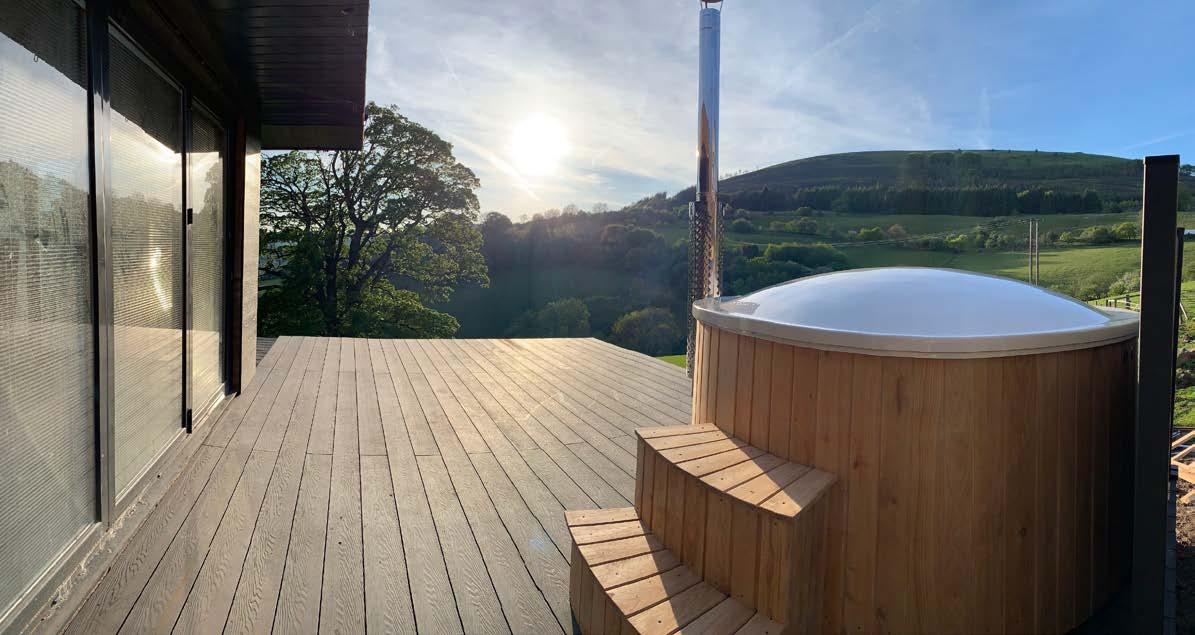
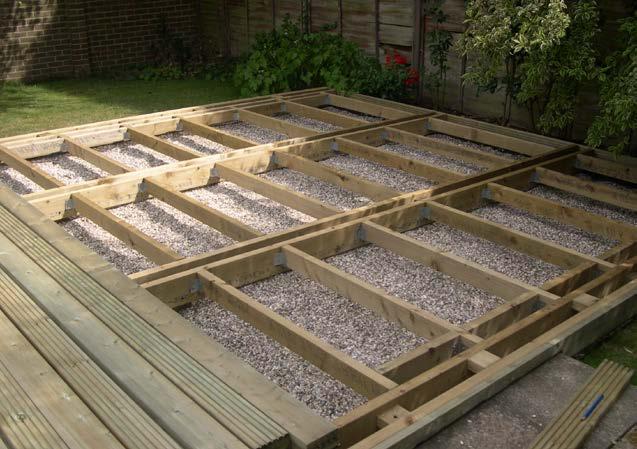
This brings the UK into line with standards in Sweden, Finland, France and north America where the whole deck substructure system (posts, beams and joists) is recognised as safety critical.
TDCA members are working to adopt this change in policy in readiness for the publication of the revised BS8417, probably in 2021. Leading the way, Use Class 4 joists are already available from TCDA members Hoppings Softwoods, Silva Timber and Champion Timber.
The question is how many decking installers will pick up on this new requirement and ensure that the work they undertake meets the latest standards? Certainly, TDCA DeckMark accredited installers whose work is inspected to ensure compliance, will be fully conversant.
To find a DeckMark accredited installer or enquire about achieving accreditation, email info@tdca.org.uk or visit the TDCA website www.tdca.org.uk where you’ll find a UK supplier search facility.
